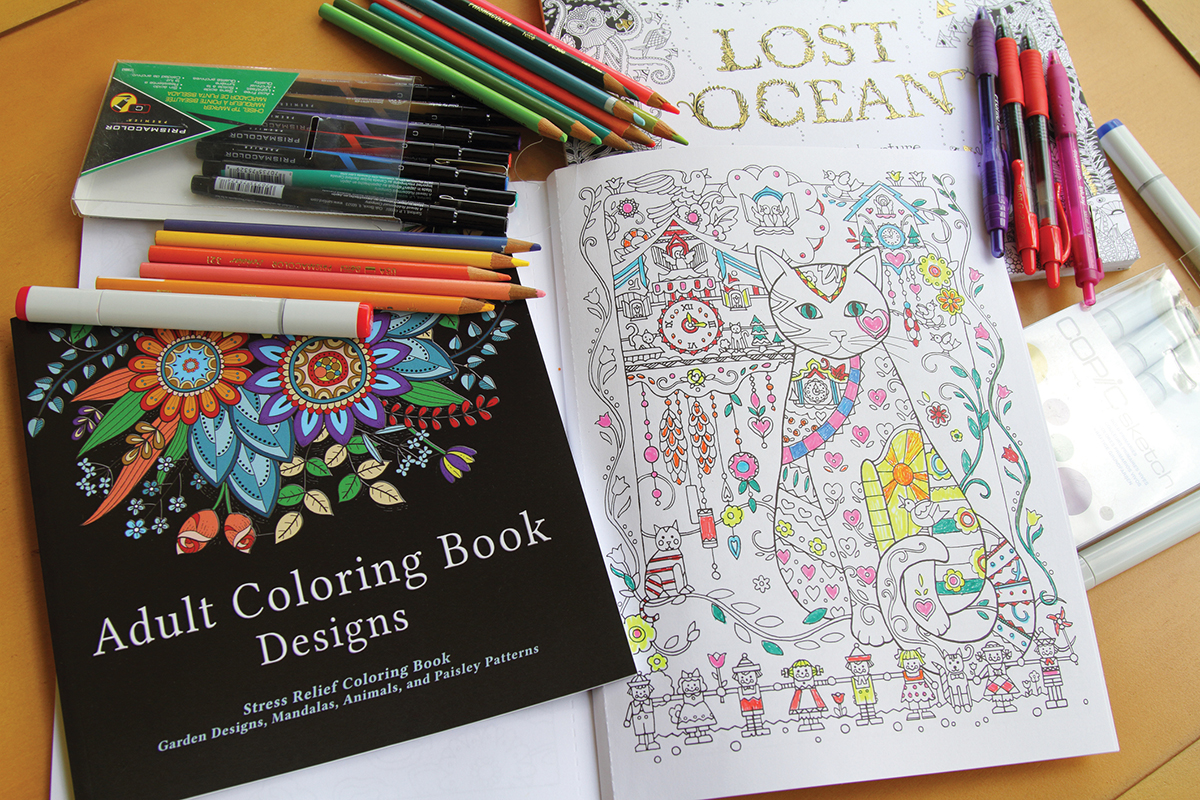If you want to witness a sign of the end times, look no further than magazine shelves at, say, Shoppers Drug Mart. Where real journalism once proudly stood, perky adult colouring books have unleashed their puerile aims.
Calming Therapy, nudges one title. Colorful Escapes, whispers another. A Million Christmas Catssuggests a feline remedy for the injustices and aggravations of 21st-century life.
You may unsubscribe from any of our newsletters at any time.
Sharpen your pencil crayons. Cuddle up with a mug of chamomile and the Harry Potter: Magical Creatures Coloring Book, and let the horrors of Aleppo, the fear of Trump and the drudgery of your day job evaporate under its spell. Be mindful. Be tranquil. Transform that line-drawn hippogriff into a magenta hippogriff. Or teal. Your choice.
Relegated to a single three-tier shelf at Shoppers are the serious magazines. The Walrus, MoneySense, The Economist, The Atlantic. An island of deep analysis and first-rate reporting in a sea of black-and-white butterflies and spiritual-but-not-religious doggerel.
Since 2013, when millennial Scottish illustrator Johanna Basford published Secret Garden: An Inky Treasure Hunt and Colouring Book — which shot to the top of the Amazon bestseller list within months of its release — hordes of felt pen-wielding consumers have revived the withering book publishing industry. Basford’s virtually text-free volumes alone have now sold more than 20 million copies.
Colouring books likely had a hand in crushing magazines, whose racks they have colonized. From 2012 to 2015, the newsstand sales of adult colouring books in Canada increased by almost 6,600 percent. That’s according to Coast to Coast Boxscore, a set of statistics kept by the country’s largest magazine distributor. Sales of current affairs magazines, on the other hand, are down by a fifth in just three years. Every other category is also flagging: fitness by 40 percent, women’s lifestyle by 25 percent, home decor by 12 percent. Even celebrity magazines are down by 20 percent.
In other words, it seems at first glance as though masses of our otherwise-bright contemporaries are opting out of spending their leisure time reading about Arctic ice or Bashar al-Assad or the Trans-Pacific Partnership, in favour of applying bright ink to bleached pulp.
Predictably, critics have responded with colouring book angst. In a 2015 article in Spiked, for example, sociologist Frank Furedi calls adult colouring “junk-therapy” and links the books to “the McDonaldisation of the mind.” The piece is called, “Hey, Grown-ups: Put Down the Colouring Pens!”
On the Christian blog The Last Hiker, one author warns that colouring the ubiquitous mandala patterns “opens the door to demons.”
English comedian Russell Brand has also weighed in. In the episode “Adult Colouring Books: Is This the Apocalypse?” on his YouTube show The Trews, he plays a clip of a news segment on the books that leads with, “Move over meditation: there’s a new creative way to relax.” Brand acerbically responds, “You can’t replace meditation — contact with your innermost self, true consciousness and perhaps a cosmic consciousness behind all reality — with colouring in. . . . This is an apocalyptic end-of-days item, that adults are so terrified, so mentally ill and frustrated, that they’re going to regress to a second childhood rather than face up to the very adult problems we have.”
Collectively, one might deduce, gravity is out and fluff is in. Colouring books are not the only symptom. The 10 top-earning newsstand titles in Canada, according to CTC Boxscore, feature headlines such as “Behind the Scenes at Kim Kardashian’s Love Shoot.” Every magazine in the top 10 is either about celebrities (People is number 1) or lifestyle or fashion (Cosmopolitan is number 10). In spite of practically vibrating with importance, Time magazine sold 40 percent fewer newsstand copies in Canada in 2015 compared to 2012. Sales of the Food Network Magazine, on the other hand, remained stable, with cover lines such as “25 Festive Cookies” and “Cook Like a Star!”
But here’s the rub. Mind-numbing crafts are not new. And neither is angst about mainstream frivolity.
In the first half of the 19th century, for example, Berlin wool work swept Europe and North America. Victorian-era enthusiasts embellished the embroidery patterns, printed on canvas, in soft threads, with glass beads added for extra flair. The Bayeux Tapestry these were not. Roses, parrots and kittens were popular themes. You could DIY your own floral slippers or stitch a little bag. By mid-century, one critic scathingly deemed the trend “the blood of murdered time.”
Which raises the question: what did this witty critic believe those perpetrators of Berlin wool work were supposed to be doing with their leisure time, if not embroidering? Reading up on the effects of urban coal smoke? Fighting slavery?
Flash forward a century, and again, we have a bad craft sweeping the western world. Paint-by-numbers was invented by artist Dan Robbins in leisure-rich 1950s Michigan. By 1954, Americans had bought $20 million worth of the kits. Acres of wholesome images — deer in autumnal forests, modest geishas — penetrated the wood-panelled rec rooms of the comfortable classes.
“I don’t know what America is coming to,” wrote one naysayer in the magazine American Artist, “when thousands of people, many of them adults, are willing to be regimented into brushing paint on a jig-saw miscellany of dictated shapes and all by rote. Can’t you rescue some of these souls — or should I say ‘morons’?”
What better alternatives did these brush-dipping nincompoops have? Banning the bomb? Researching DDT?
Well, probably. Effective political action rarely just requires “a small group of thoughtful, committed citizens,” as the anthropologist Margaret Mead famously prescribed. Modern protest requires great masses of people with the twin privileges of leisure time and security: the exact group at whom adult colouring books are aimed.
The thing about leisure time is that many Canadians have quite a lot of it. Colouring a few hippogriffs or Christmas kitties isn’t enough of a disruptor to explain the demise of serious magazine reading, or our wishy-washy collective action on climate change. You’d think that we could both colour and collaborate.
This story originally appeared in the March 2017 issue of The Observer with the title “Colour me sedated.”













